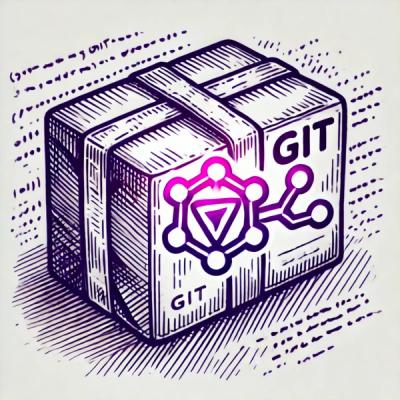Flask-SimpleLDAP
Flask-SimpleLDAP provides LDAP authentication for Flask and is compatible with and tested on Python 3.8+.
Quickstart
First, install Flask-SimpleLDAP:
pip install flask-simpleldap
Flask-SimpleLDAP depends, and will install for you, a recent version of Flask
(2.2.5 or later) and python-ldap.
Please consult the python-ldap installation instructions if you get an error during installation.
Next, add an LDAP instance to your code and at least the three
required configuration options. The complete sample from
examples/basic_auth/app.py looks like this:
from flask import Flask, g
from flask_simpleldap import LDAP
app = Flask(__name__)
app.config["LDAP_BASE_DN"] = "OU=users,dc=example,dc=org"
app.config["LDAP_USERNAME"] = "CN=user,OU=Users,DC=example,DC=org"
app.config["LDAP_PASSWORD"] = "password"
ldap = LDAP(app)
@app.route("/")
@ldap.basic_auth_required
def index():
return f"Welcome, {g.ldap_username}!"
if __name__ == "__main__":
app.run()
When the user visits the protected URL, the browser will prompt for the
login and password via the built-in HTTP authentication window. Note that
with the default value of LDAP_USER_OBJECT_FILTER the login is expected
to match the userPrincipalName attribute
of the LDAP user, e.g. me@mydomain.com.
Once you get the basic example working, check out the more complex ones:
OpenLDAP
Add the LDAP instance to your code and depending on your OpenLDAP
configuration, add the following at least LDAP_USER_OBJECT_FILTER and
LDAP_USER_OBJECT_FILTER.
from flask import Flask, g
from flask_simpleldap import LDAP
app = Flask(__name__)
app.config["LDAP_REALM_NAME"] = "OpenLDAP Authentication"
app.config["LDAP_HOST"] = "openldap.example.org"
app.config["LDAP_BASE_DN"] = "dc=users,dc=openldap,dc=org"
app.config["LDAP_USERNAME"] = "cn=user,ou=servauth-users,dc=users,dc=openldap,dc=org"
app.config["LDAP_PASSWORD"] = "password"
app.config["LDAP_OBJECTS_DN"] = "dn"
app.config["LDAP_OPENLDAP"] = True
app.config["LDAP_USER_OBJECT_FILTER"] = "(&(objectclass=inetOrgPerson)(uid=%s))"
app.config["LDAP_GROUP_MEMBERS_FIELD"] = "uniquemember"
app.config["LDAP_GROUP_OBJECT_FILTER"] = "(&(objectclass=groupOfUniqueNames)(cn=%s))"
app.config["LDAP_GROUP_MEMBER_FILTER"] = "(&(cn=*)(objectclass=groupOfUniqueNames)(uniquemember=%s))"
app.config["LDAP_GROUP_MEMBER_FILTER_FIELD"] = "cn"
ldap = LDAP(app)
@app.route("/")
@ldap.basic_auth_required
def index():
return f"Welcome, {g.ldap_username}!"
if __name__ == "__main__":
app.run()
Configuration
| Setting | Description |
|---|
LDAP_HOST | The host name or IP address of your LDAP server. Default: "localhost". |
LDAP_PORT | The port number of your LDAP server. Default: 389. |
LDAP_SCHEMA | The LDAP schema to use between "ldap", "ldapi" and "ldaps". Default: "ldap". |
LDAP_SOCKET_PATH | If LDAP_SCHEMA is set to "ldapi", the path to the Unix socket path. Default: "/". |
LDAP_USERNAME | Required: The username used to bind. |
LDAP_PASSWORD | Required: The password used to bind. |
LDAP_TIMEOUT | How long (seconds) a connection can take to be opened before timing out. Default: 10. |
LDAP_LOGIN_VIEW | Views decorated with .login_required() or.group_required() will redirect unauthenticated requests to this view. Default: "login". |
LDAP_REALM_NAME | Views decorated with .basic_auth_required() will use this as the "realm" part of HTTP Basic Authentication when responding to unauthenticated requests. |
LDAP_OPENLDAP | Set to True if your server is running OpenLDAP. Default: False. |
LDAP_USE_SSL | Set to True if your server uses SSL. Default: False. |
LDAP_USE_TLS | Set to True if your server uses TLS. Default: False. |
LDAP_REQUIRE_CERT | Set to True if your server requires a certificate. Default: False. |
LDAP_CERT_PATH | Path to the certificate if LDAP_REQUIRE_CERT is True. |
LDAP_CUSTOM_OPTIONS | dict of ldap options you want to set in this format: {option: value}. Default: None. |
LDAP_BASE_DN | Required: The distinguished name to use as the search base. |
LDAP_OBJECTS_DN | The field to use as the objects' distinguished name. Default: "distinguishedName". |
LDAP_USER_FIELDS | list of fields to return when searching for a user's object details. Default: [] (all). |
LDAP_USER_GROUPS_FIELD | The field to return when searching for a user's groups. Default: "memberOf". |
LDAP_USER_OBJECT_FILTER | The filter to use when searching for a user object. Default: "(&(objectclass=Person)(userPrincipalName=%s))" |
LDAP_USERS_OBJECT_FILTER | The filter to use when searching for users objects. Default: "objectclass=Person" |
LDAP_GROUP_FIELDS | list of fields to return when searching for a group's object details. Default: [] (all). |
LDAP_GROUP_MEMBER_FILTER | The group member filter to use when using OpenLDAP. Default: "*". |
LDAP_GROUP_MEMBER_FILTER_FIELD | The group member filter field to use when using OpenLDAP. Default: "*". |
LDAP_GROUP_MEMBERS_FIELD | The field to return when searching for a group's members. Default: "member". |
LDAP_GROUP_OBJECT_FILTER | The filter to use when searching for a group object. Default: "(&(objectclass=Group)(userPrincipalName=%s))". |
LDAP_GROUPS_OBJECT_FILTER | The filter to use when searching for groups objects. Default: "objectclass=Group". |



